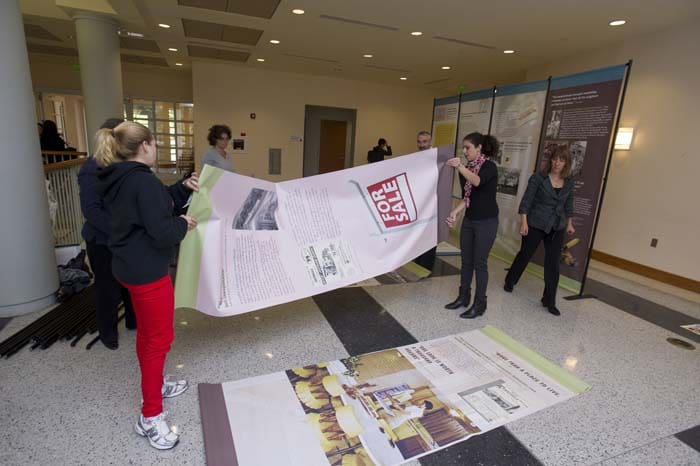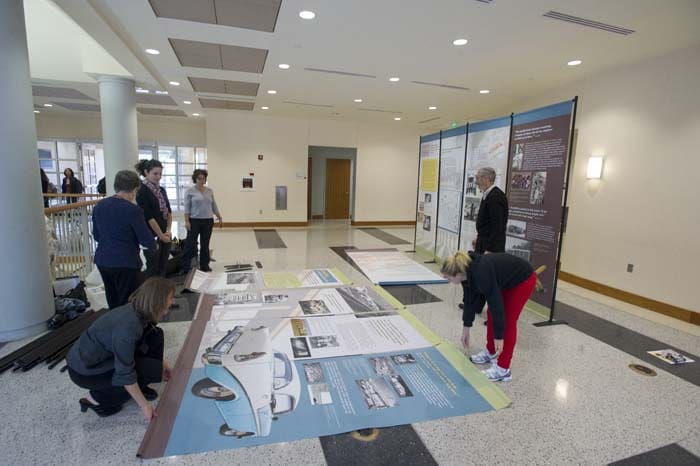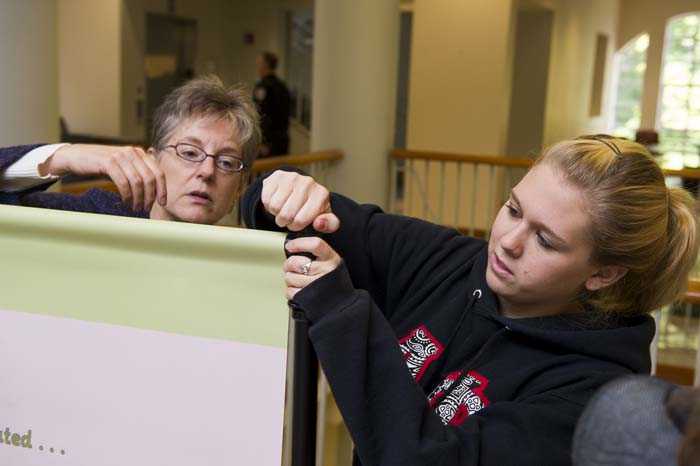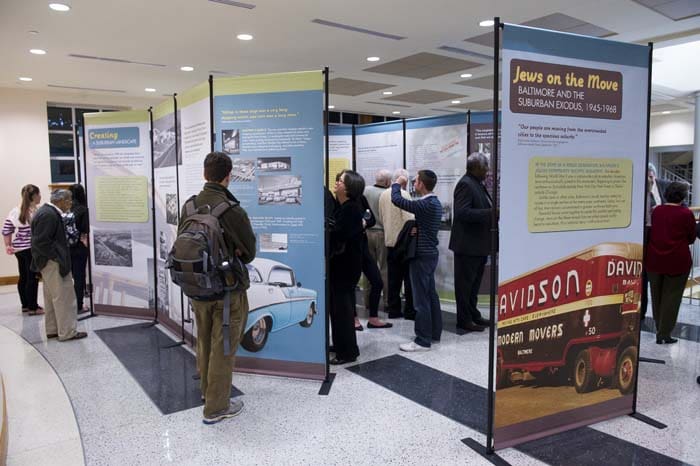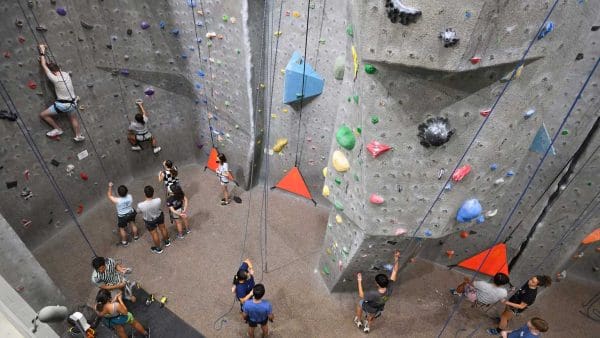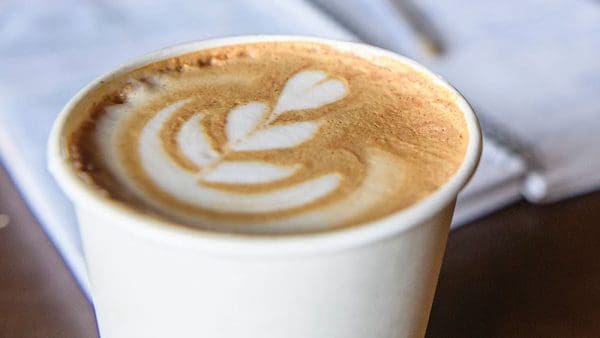They are the pictures of suburban bliss: a smiling young mother playing with her children in their backyard pool. A man and a boy approach the Jewish Community Center, hand in hand. A shovel-wielding rabbi breaks ground for a new synagogue. These are just a few glimpses of life illustrated in the exhibit, Jews on the Move: Baltimore and the Suburban Exodus, 1945–1968, curated in part by Johns Hopkins undergraduates.
With support from the Andrew W. Mellon Foundation, the Johns Hopkins University Program in Museums and Society partners with local museums to take undergraduate students out of the classroom and give them hands-on museum experience. In spring 2012, staff from the Jewish Museum of Maryland taught a course at Johns Hopkins that involved students in the creation of the exhibit, from conducting historical research and mining the archives to communicating effectively through writing and design.
Jews on the Move explores the postwar relocation of Baltimore’s Jewish community from the city to the northwest suburbs of Baltimore County. In the years following World War II, Baltimore Jews, like so many other Americans, left behind urban neighborhoods in pursuit of the American dream. Within the span of a single generation, the Baltimore Jewish community swiftly reconfigured itself and experienced a social, economic, and cultural transformation. The exhibit offers a local focus on a national story of suburbanization.
“It is both trying to talk about this particular experience, for this particular group of people,” says Elizabeth Rodini, director of the Program in Museums and Society, “but there is a broader relevance; lots of people went through this type of experience. It’s not unique to the Jewish community; it’s not unique to Baltimore, this whole shift to suburban life. [The exhibit conveys] something unique about the Baltimore experience, but also connects to people through what they know.”
Rodini says seven Krieger School students worked on the exhibit, giving them valuable hands-on experience. “One of the most rewarding opportunities for students in the Museums and Society Program is the chance to get off campus and work in real-life situations—with professionals in the field and on projects with a public face. The lessons learned in the museum are unlike anything we can provide in the classroom.”
For sophomore Molly Martell, the biggest advantage to being one of the student curators was the opportunity to work with so many in the field.
“We got to work with a designer, some curators, and staff who worked with collections and archives, so we really got to talk with an array of people who are involved in the process,” says Martel.
The fruits of the collaboration came in October, with the exhibit’s opening. “The hardest part was that by the end of it, [the project] was kind of our baby, and then we had to hand it off to the staff… We had all gotten so invested in it,” says Martell. “It was much more than just a class on learning how to put together an exhibit. It also gave me a broader knowledge about things that I wasn’t familiar with from my background.”
A traveling exhibit, Jews on the Move is on display in Hodson Hall on the Homewood campus through December 17, seven days a week, 8 a.m.–10 p.m. From there it will move to other locations in the Baltimore area.

